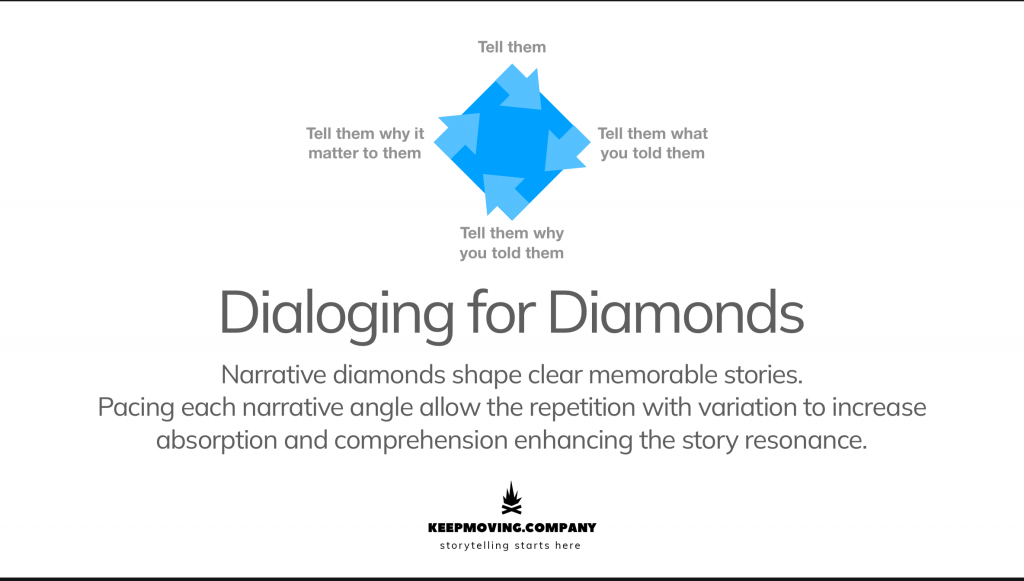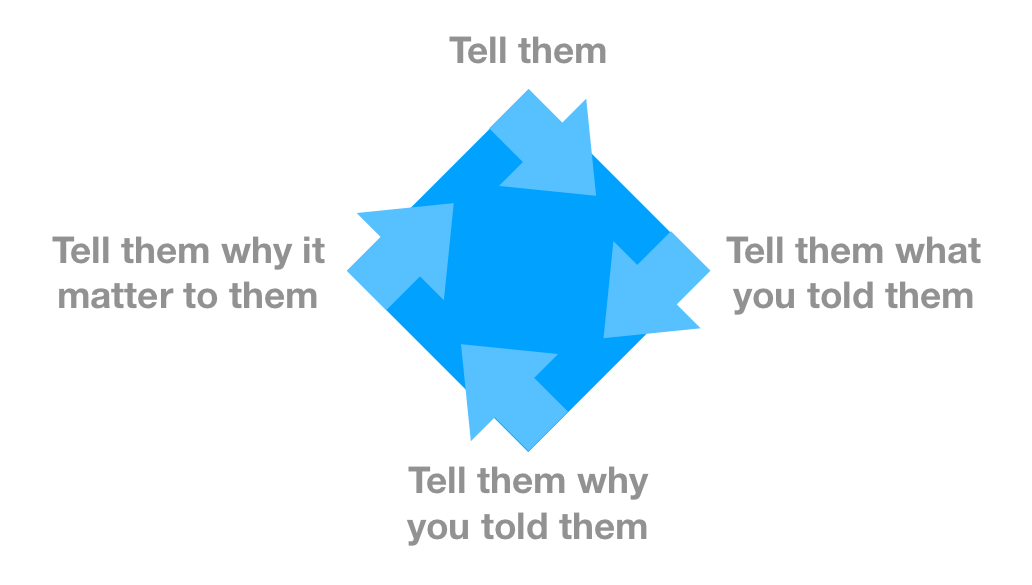
When it’s time to tell a story, pitch an idea, or have a memorable conversation ion this is one of those tools/techniques.
Narrative diamonds shape clear, memorable stories.
Why is that?
It’s likely because we are, as humans, natural storytellers and story listeners. But there are specific ways to enhance how you prepare and deliver stories; there is no perfect way to tell a story, but some of this framing can be helpful.
First, let’s look at some dialog patterns.
Some simple common ways humans have dialogs… not an exhaustive list:
- The First Dialog: First, date, meeting teammates, clients, and meetups
- The 1:1 Peer, Manager-to-Peer : face to face is hard, screen to screen still hard. Many humans struggle with eye contact (Charisma Myth)
- The Readout: You are narrating a deliverable summing up some work
- The Workshop: A facilitated, moderated, ongoing back-and-forth with guides
- Group: Date, Meetup, Affinity, or other group context
- Peer/Peer: Romantic, Platonic, Neighbors, Fellow travelers 3A, B, in-flight
- One to Many: Broadcast like a TED Talk – Large group, simple mechanisms
- Many to One: Narrowcasting, Panel QA, Murder Board, town halls
- The BD pitch: Selling, small or large deals, concept transmission
- The VC pitch: Buying, investment in people and ideas, identifying a unicorn
Pacing each narrative angle allows the repetition with variation to increase absorption and comprehension, enhancing the story’s resonance. Timing is everything.
So, about pacing, conceptually, pacing in conversations is matching (I’m oversimplifying) matching energy, tone, breathing body language as one would imagine.
On the concept of repetition with variation, see a previous post about repetition with variation as a concept. Part of the technique is being about to repeat elements of a dialog that can create important, memorable anchors, moments of dialog.
Example to consider: vary the description of the opportunity…
” The chance to win more of your fair share of the market” v.1
” We can grow, share, and do it in this market disproportionately better than our peers.” v.2 (now gpts can do this for you, but your prompting makes this a richer result”
” Our ideas will steer more wallet our way in this market” v.3
So what?
These are simple examples, but when you do it, think of the this message diamond concept where you tell them what you want them to know, then you tell them what you told them, tell them why you told them, then emphasize how it matters or relates, finally, come back and reiterate what you told them.

Variation is about how you choose to vary all the aspects of the narratives whether it’s back and forth become a way to allow the message to be absorbed while not being monotonous or boring. The other aspect of variation makes a process of ingesting messages easier to tolerate rather than being fed a stream that is difficult to consume.
So the brain is an efficient system, where it wants to simplify nearly all inputs and preception to the simplest reference able unit of memory, like a this is like this other thing I know aka intuition. Familiar patterns that repeat and cary enable more comphrenhension and create a stable absorbtion especially for new knowledge. Think of when in school the repeated drills for the times tables or vocabulary, spelling bs, chess moves. These all take adavantage of memory, repeated inputs to reinforce recent knowledge gains.
Now consider this: Duo Lingo, suduko, puzzles and games of all kinds, they rely and build on the brains science of recognition and recall, two mechanisms at work in the brain as we consume knowledge and information.
Turns out that that is also two mechanisms used in determining various cognitive issues around memory and brain function. While I am not a dr, cognitive scientist or an expert in anything, turns out there are tomes of information out there. I have found in my experience that it has been very enlightening to how my own storytelling and narrative engineering™ I have been working at are backed up by science.
Listen, when you craft a good story you can feel it when you deliver it well. I do hope that some of these and other storytelling techniques you encounter help you be the best storyteller you can be.
If you made it down here, I’m grateful. Now go tell a story.
#keepmoving and #keeptellingstories #diaglogingdiamonds